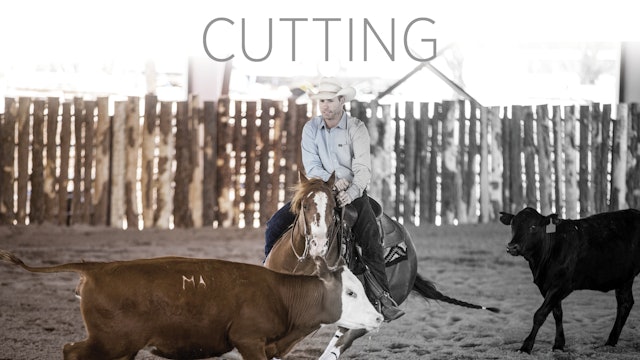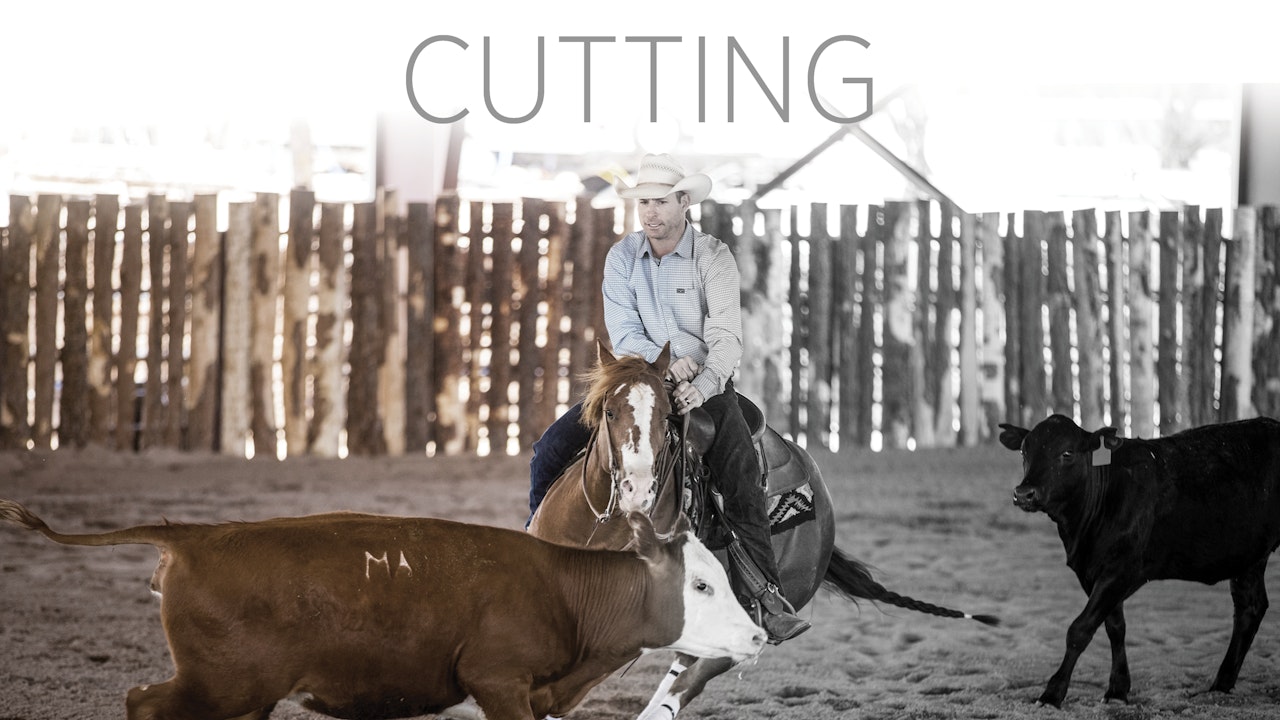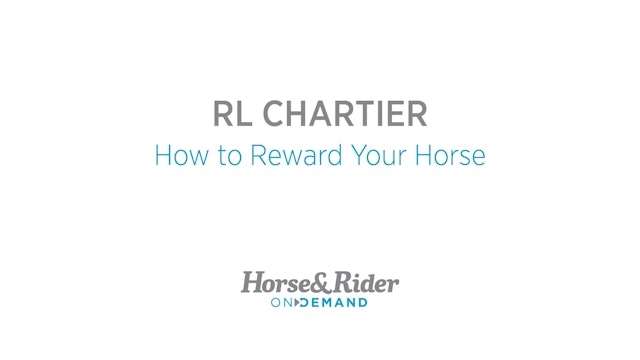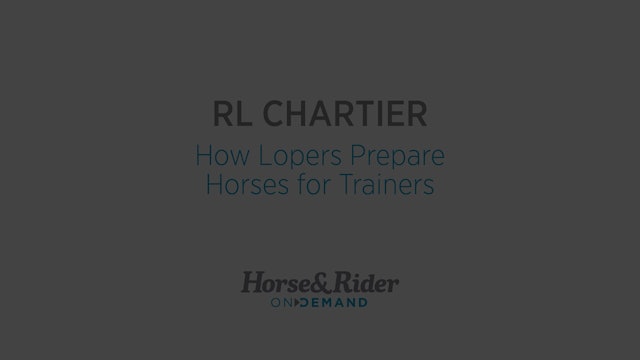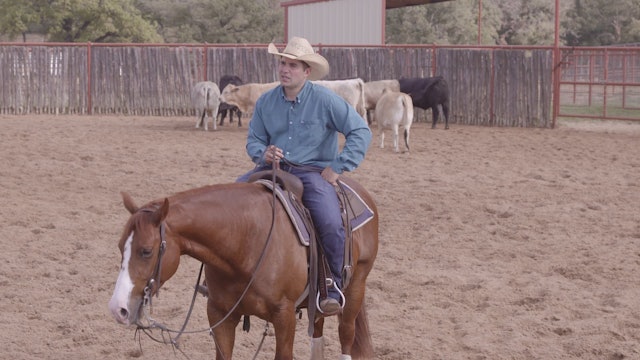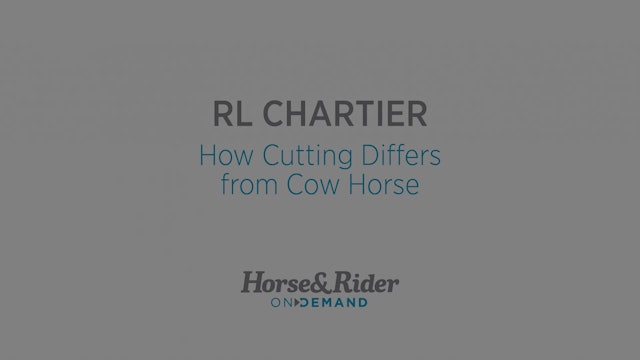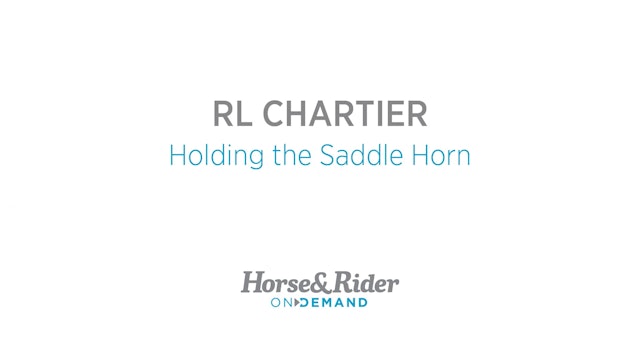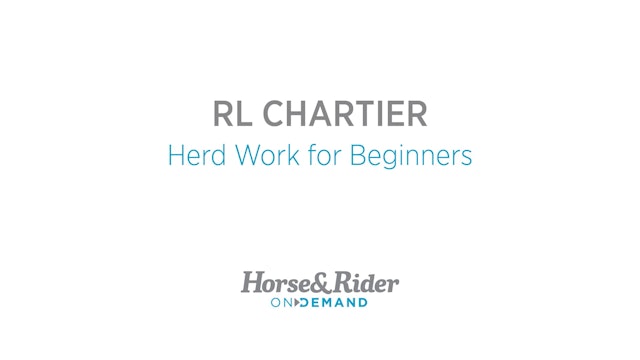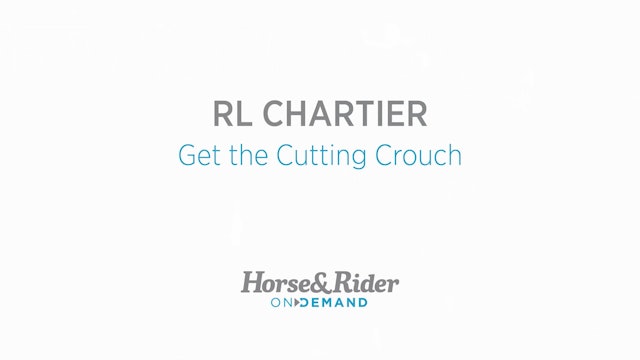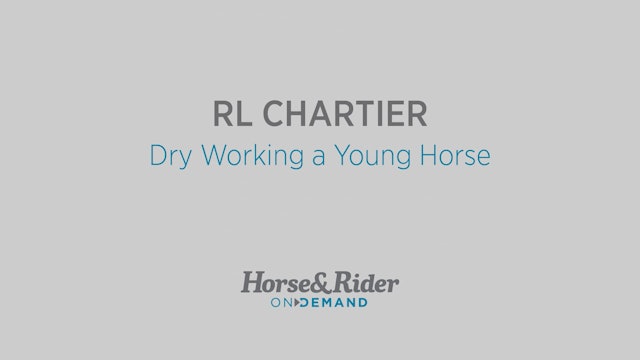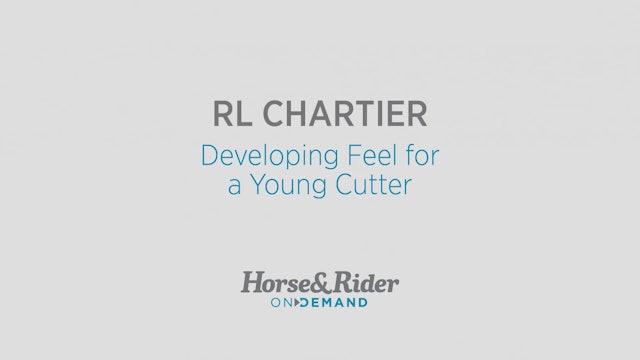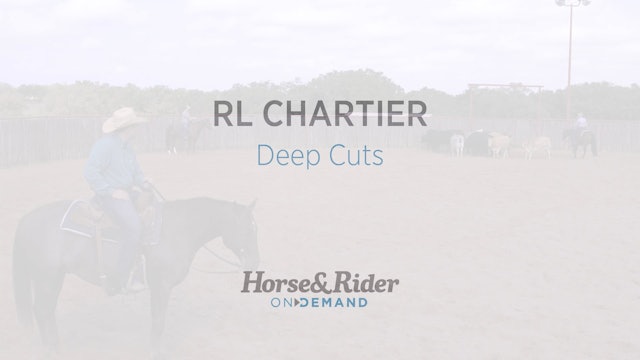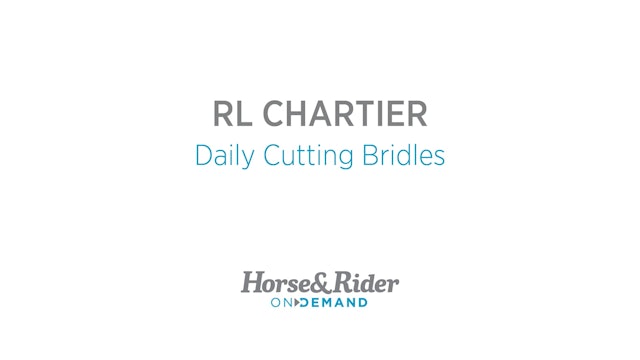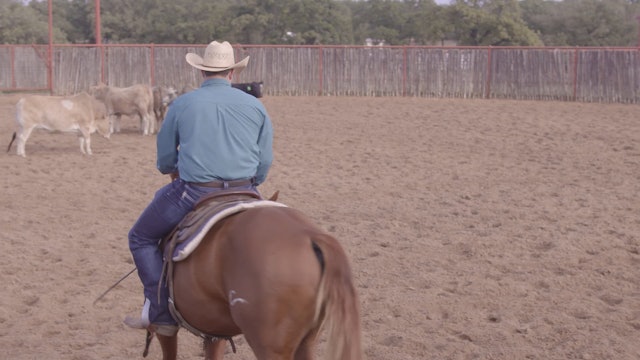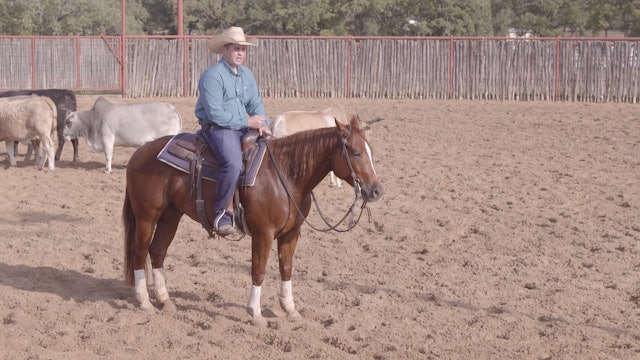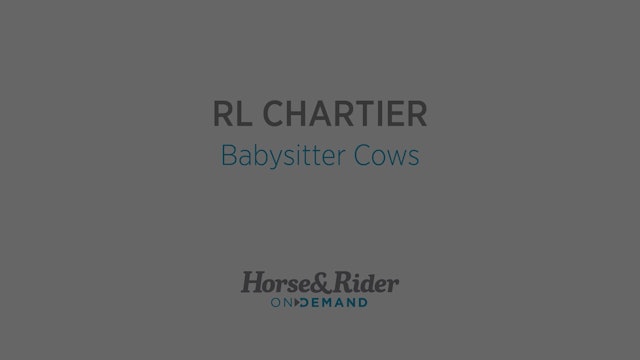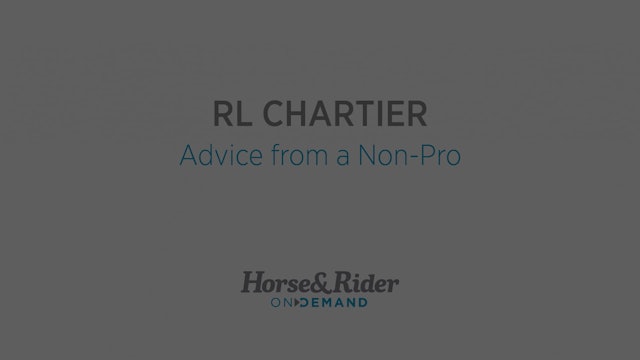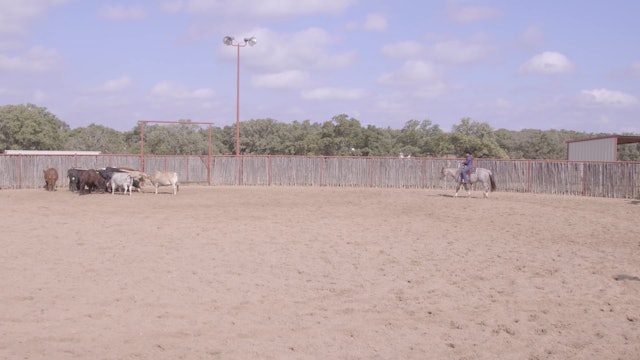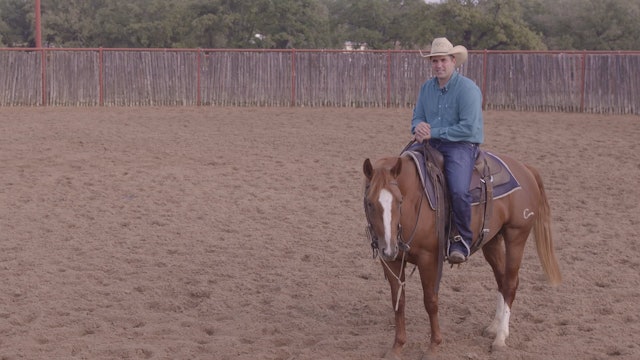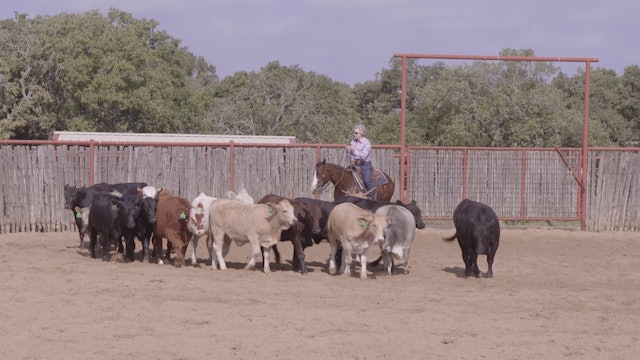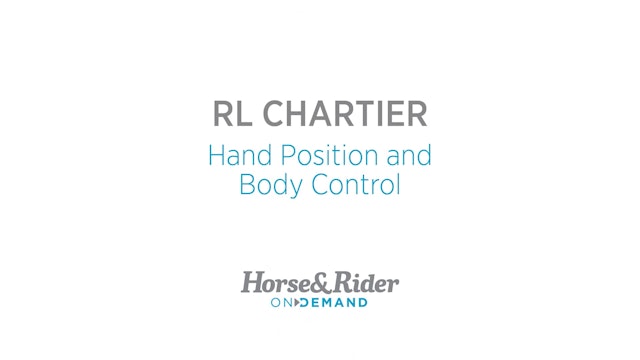Cutting
Step into the fast-paced, high-stakes world of cutting horse competition with Ride TV’s Cutting video series—your front-row seat to one of Western performance’s most thrilling disciplines. This curated collection dives deep into the art and intensity of cutting, featuring elite runs, expert breakdowns, and insider tips from top professionals who live and breathe the sport. Whether you’re in the saddle chasing your next clean cut or tuning in to learn what separates a 72 from a 76, these videos deliver real-world knowledge, seasoned strategy, and arena-tested technique. From reading cattle and refining your horse’s stop, to understanding scoring and building a show-ready run—Cutting on Ride TV is your all-access pass to better, smarter riding.
-
Letting Your Horse Work on a Drape Rein
When you show a cutter, you do so on a loose rein and by using your feet. Learning how to work your horse on a drape rein and avoid "helping" your horse with your hands will allow you to be successful in the show pen.
-
How to Reward Your Horse
There are many areas where a horse can find release in the cutting pen. RL explains that the biggest release and reward for the horse is a pet on the neck and getting to rest.
-
How Lopers Prepare Horses for Trainers
Lopers are the riders who warm up the horses for the trainers. Learn more about the loper's job and what that they do to help the horses be successful with the trainer.
-
How Cutting is Judged
If you're wanting to get into cutting but aren't sure what the judges look for, RL breaks down how the event is judged. Learn about what the judges will look for when you ride into the show pen.
-
How Cutting Differs from Cow Horse
There are some major differences between cutting and the cutting portion of the cow horse. RL Chartier explains key differences between the events.
-
Holding the Saddle Horn
If you're familiar with cutting, then you know that holding the horn is essential for body control. When your horse goes to stop or manuever around a cow, you have to remain centered and not lean forward.
-
Herd Work for Beginners
Herd work is an art and can be challenging for beginners. Learning how to navigate the herd while being able to control your horse takes practice and timing.
-
Get the Cutting Crouch
Watching an experienced cutting horse, you'll notice that he will get low to the ground as he works the cow. RL explains you can't train a horse to develop the crouch, but instead the horse will develop it at his own pace.
-
Dry Working a Young Horse
Dry working a young horse will help to not only prepare his body for the manuevers he's about to perform, but will also prepare his mind. Watch to learn how RL dry works his young horse before working cattle.
-
Developing Feel for a Young Cutter
When working with a young horse, RL likes for the horse to have some feel because the more you work on the training the more electric they will remain throughout their career. The horses that go through the motions and are too relaxed are less likely to be responsive and aware when it comes to de...
-
Daily Cutting Bridles
Learn about the various types of bits used on cutting horses. RL explains the bits that he uses in his program and why he uses each bit on a horse.
-
Body Position for Cutting
Body position is important for you as a rider. RL explains how riders have a tendancy to lean in an effort to control the cow with his or her body. Keeping your body centered will give you maximum control on the cow while your horse performs.
-
Body and Head Control During Cattle Work
RL explains what he does for a horse that braces and gets stiff while working cattle. The more training you do to help him to understand his job will allow him to relax in the arena while doing his job.
-
Babysitter Cows
Babysitter cattle work to help control the herd while in the practice pen. RL explains why he likes these cows as babysitters and how they perform their job.
-
Cutting Advice from a Non-Pro Rider
Take advice from a non-pro cutter on how to get involved with the event and how to select a trainer that fits your needs and goals. Sharon explains who she is, why she loves cutting, and more about how to try the event if it's new to you.
-
Adjusting Tack for Cutting
Tack adjustment is important in performance events to ensure safety for you and your horse. RL explains how he likes to adjust his tack.
-
Navigating the Herd
Navigating the herd can be challenging. Learn how to properly navigate the herd to perform a cut.
-
2-Year-Old Basics for Cutting
Start off a young horse's career with succcess by learning the basic skills that a 2-year-old cutter should know. The goal should be able to control your horse's body like you would need to control a cow.
-
Clearing the Herd
Learn what it means to clear the herd and how to do it from RL Chartier.
-
Hand Position and Body Control
RL Chartier explains hand position and body control for cutting.
-
Selecting a Cut
Learn how to cut for shape or select a cow to cut from RL Chartier.
-
Working Turns on a Young Horse
Working a young horse at 90 degree turns teaches him to move his body correctly, however, performing any form of turn while
-
Working on a Relaxed Rein
Working a cutting horse on a relaxed rein will help him to understand his directional cues when you do pick up on the reins.

